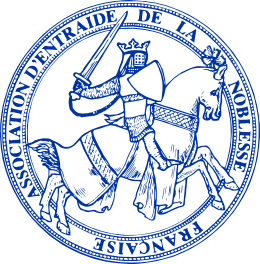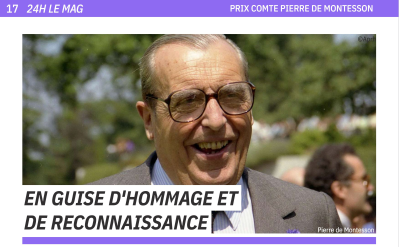News

Le Figaro Magazine: "Château de Beauregard: the Galerie des Illustres regains its lustre".
The 327 paintings in the portrait gallery of this jewel of the Loire Valley are a curiosity unique in Europe. Thanks to the determination of its owners, they have been superbly restored.

Guy du Pavillon, owner of Beauregard, keeps a close eye on the installation of the last restored portraits in the Galerie des Illustres. Stephan Gladieu for Le Figaro Magazine
Louis XI, Henri II, Diane de Poitiers, Philippe IV of Spain, Charles V... The Galerie des Illustres at the elegant Château de Beauregard in the Loir-et-Cher region, halfway between Blois, Cheverny and Chambord, is a kind of Who's Who of the 17th century. A sort of TikTok of the celebrities of the moment. Lined up side by side, the faces of the men and women who have marked the history of years and centuries gone by are forever frozen, impassive. A total of 327 portraits, delivered between 1617 and 1638, decorate the immense gallery, 26 metres long by 6 metres wide, superbly adorned with a French joist ceiling whose brilliant blue was obtained from a precious lapis lazuli powder. On the floor, 5,600 Delft tiles depict the soldiers of a marching army under the reign of Louis XIII.
On the wall, then, is this astonishing frieze depicting the crème de la crème of the period: monarchs from France (from the reign of Philippe VI de Valois to that of Louis XIII) and elsewhere (Barbarossa, Soliman...), leading figures of the court, lords of the time, conquistadors (Christopher Columbus, Pizarro...), men of the Church and of letters... Beauregard holds the most complete and exhaustive portrait gallery preserved to date in Europe. A masterpiece of 17th-century France that visitors can now discover at its very best, as the restoration of all the paintings has just been completed (the Château de Beauregard is open to visitors for eight months of the year).
The spirit of the Renaissance
"All the portraits have been patiently restored since 1986," explains Guy du Pavillon, passionate owner of Château de Beauregard, acquired by his great-grandmother during the inter-war years. The last paintings were hung last spring. It was my parents who initiated this colossal project, which my wife Natalie and I continued when we took over ten years ago. It's very moving for our family to see this long project finally completed. The jewel of Beauregard is now perfectly showcased.
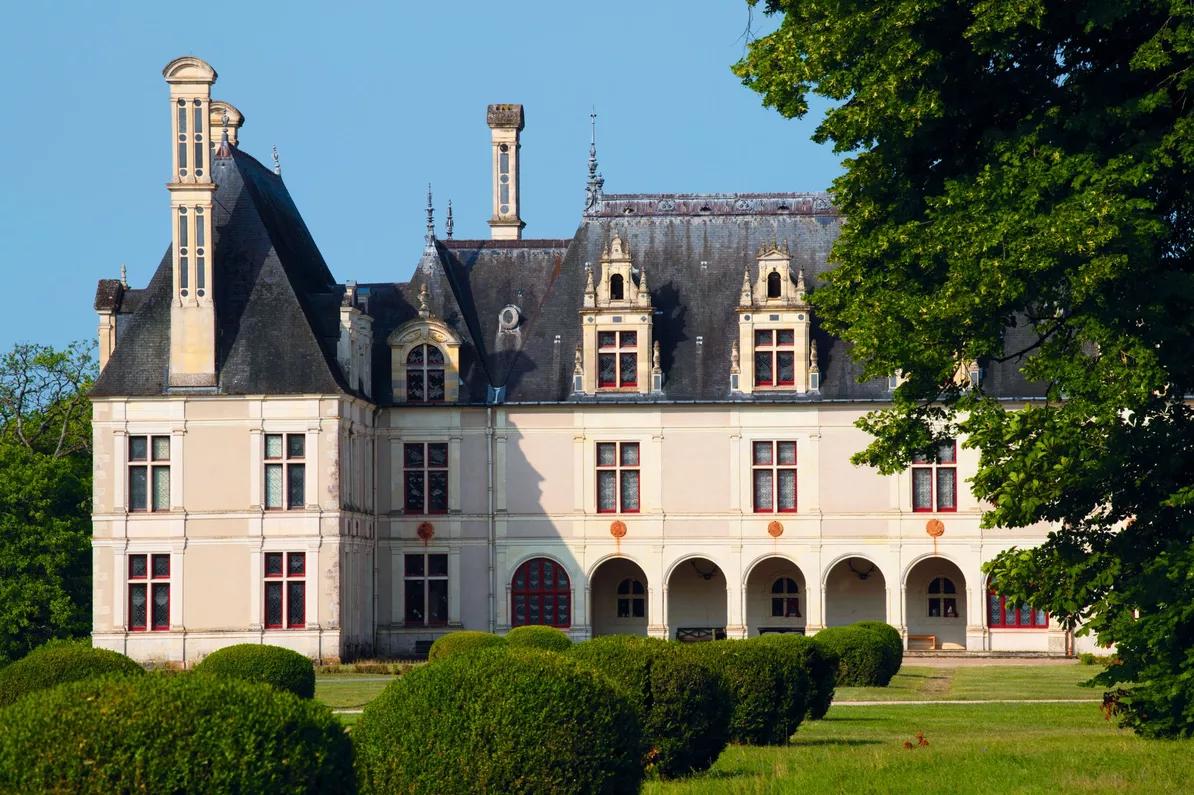
Built in 1550, Beauregard was used as a hunting lodge by FrançoisI. Stephan Gladieu for Figaro Magazine
We owe this astonishing gallery to a certain Paul Ardier. Controller of war and treasurer to Henri IV, he acquired Beauregard in 1617. Paul Ardier's considerable fortune enabled him to carry out major embellishment work on this former hunting lodge of François I, built in 1550 and bordering on the Chambord estate. He enlarged it by creating two new wings, as well as various outbuildings (stables, outbuildings, sheds, etc.). But it was above all his portrait gallery that enabled him to leave his mark on the place.
"It's an eminently humanist project, in keeping with the spirit of the Renaissance. These portraits represent the collection of the cultured, honest man of the time, driven by a desire to understand and embrace the world," explains Hélène Lebédel-Carbonnel, Inspector of Heritage and Architecture at the French Ministry of Culture and Curator of Historic Monuments (Indre et Loir-et-Cher). This gallery brings together inspirational figures whose example was to lead humanity towards the Good, great men who constituted political, intellectual, spiritual models... The aim was to encourage Beauregard's guests to reflect and philosophize, to discuss world affairs, as Francis I liked to do in his gallery at the Château de Fontainebleau." Portrait galleries were particularly popular at the time. It was Catherine de Médicis who started the trend. In keeping with the Florentine tradition (portrait galleries can be found in the Uffizi Palace, for example), the most Italian of French sovereigns commissioned artists to paint numerous portraits of her children and court figures, to be displayed in her homes.
Guaranteed durability
Hélène Lebédel-Carbonnel adds: "It's remarkable that Beauregard's paintings have not been scattered among different museums, and that they have remained in place, presented in their original décor of painted panelling and ceilings. The ensemble they make up is extremely rich, especially as the archives have preserved the successive lists drawn up by Paul Ardier of the characters he wanted to feature in Beauregard. He would reflect, choose some, cross out others... The last portrait was delivered to him the year he died."
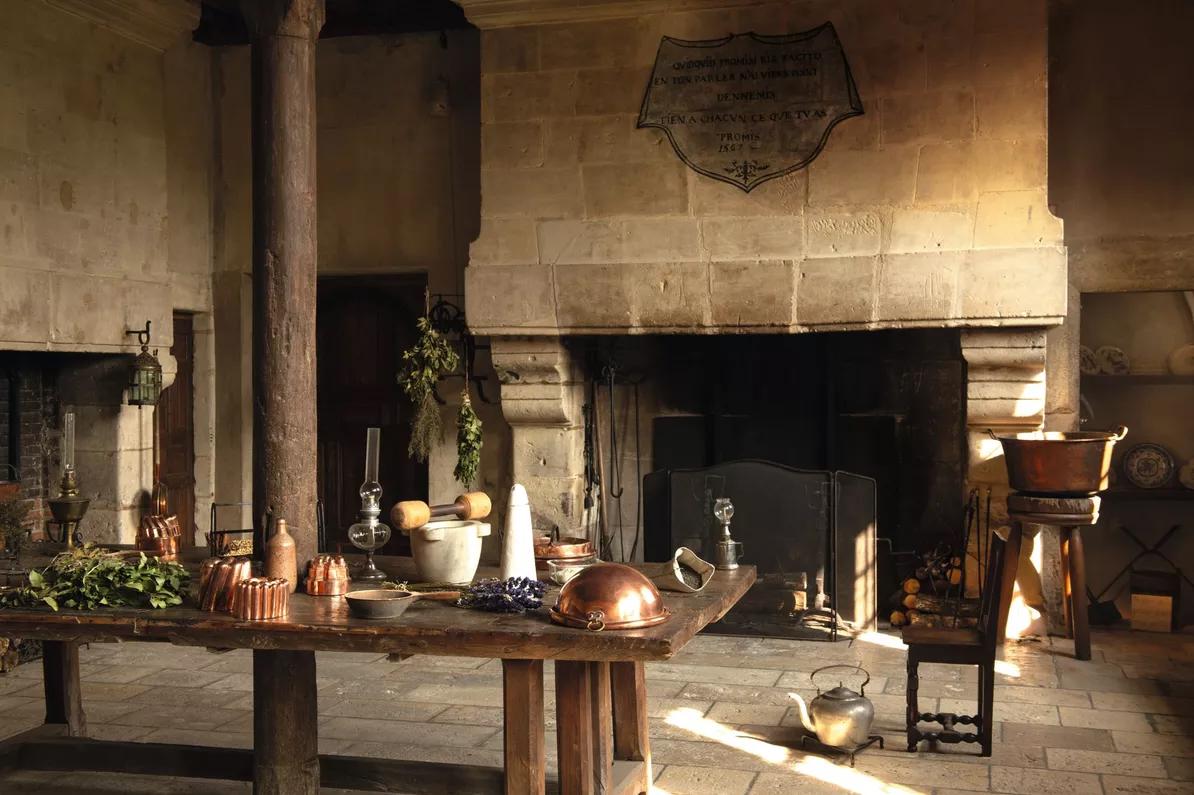
Kitchens and outbuildings retain the charm of the past. Stephan Gladieu
Anne-Laure Feher, curator-restorer of paintings, knows every detail of these paintings (55 cm by 45 cm on average). She has restored most of them over the last 28 years, "the same age as my eldest son", she says with emotion. A stroke of luck for the Galerie des Illustres: the unity of the whole has been preserved. The restoration work she has carried out is remarkable. When I arrived, a protocol was established with the château's curator," explains Anne-Laure Feher. The paintings were all lined during the restoration campaigns, but improvements have been made over the years. We use far fewer solvents, for example. Today's materials ensure that the works last much longer."
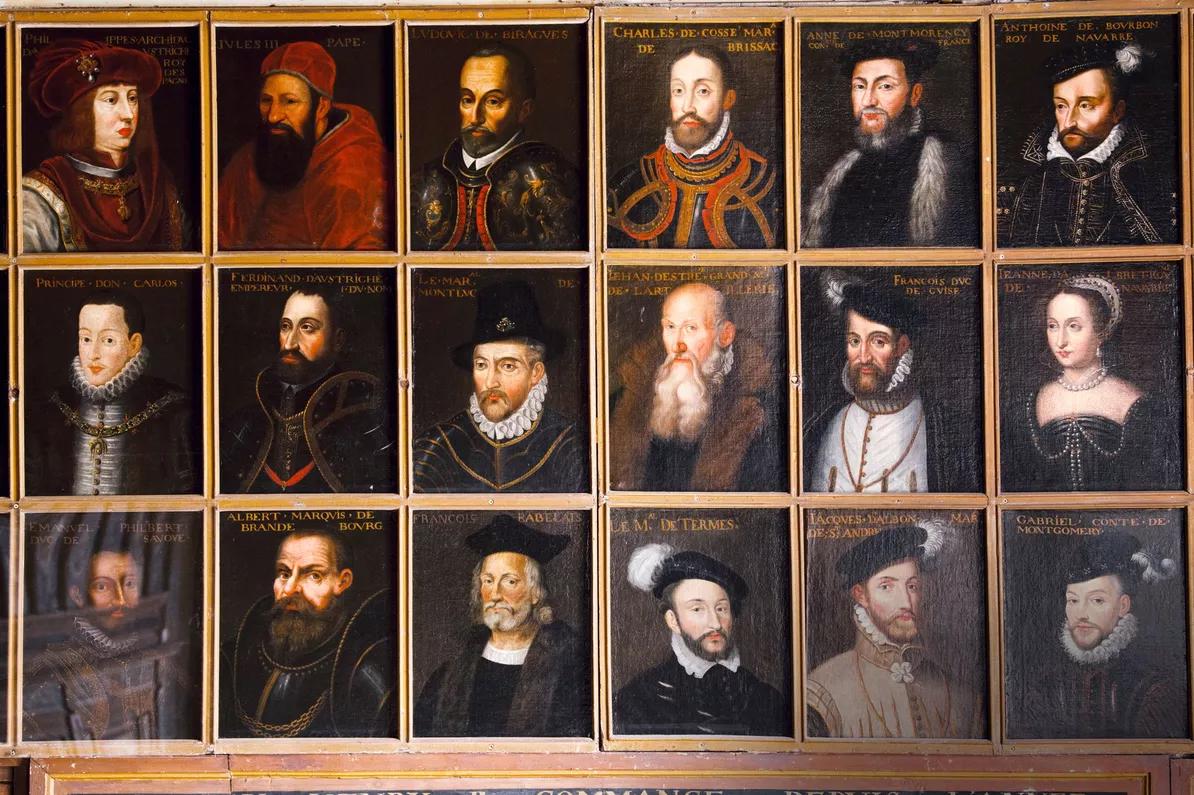
The portrait gallery has remained intact since its creation. Stephan Gladieu for Le Figaro Magazine
The Conservation régionale des Monuments historiques has monitored the project from the outset, both technically and scientifically, as well as financially. Every effort was made to ensure that the ensemble would be passed on to future generations in the best possible state of authenticity. "Which is not to say that the Beauregard portraits are as good as new," explains Natalie du Pavillon. That's the art of successful restoration! The cost of this high-precision rescue is between 1,500 and 2,000 euros per painting, representing an overall investment of between 500,000 and 650,000 euros. The State supported the project to the tune of 40-50%, via grants from the Direction Régionale des Affaires Culturelles (Drac), with the remainder financed by private family funds. Hélène Lebédel-Carbonnel notes: "It's exceptional to see private individuals carrying out a restoration of this scale over almost forty years. It's our role to support private owners, as long as they are committed to preserving property that represents a collective interest."
20,000 visitors a year
This is undoubtedly the case for Château de Beauregard, which was first listed as a Monument Historique in 1840, and whose owners have always been keen to show the public its very best side. Alain and Anne-Marie du Pavillon, Guy's parents, called on the renowned landscape architect Gilles Clément to design a contemporary garden at Beauregard, known as the portrait garden, where boxwoods are king; but also the beautiful perspectives of the park, in the continuity of the existing one, created in the 19th century. Remarkable trees have been cleared (including a majestic cedar of Lebanon), while others have been planted to structure the space and create attractive alignments...
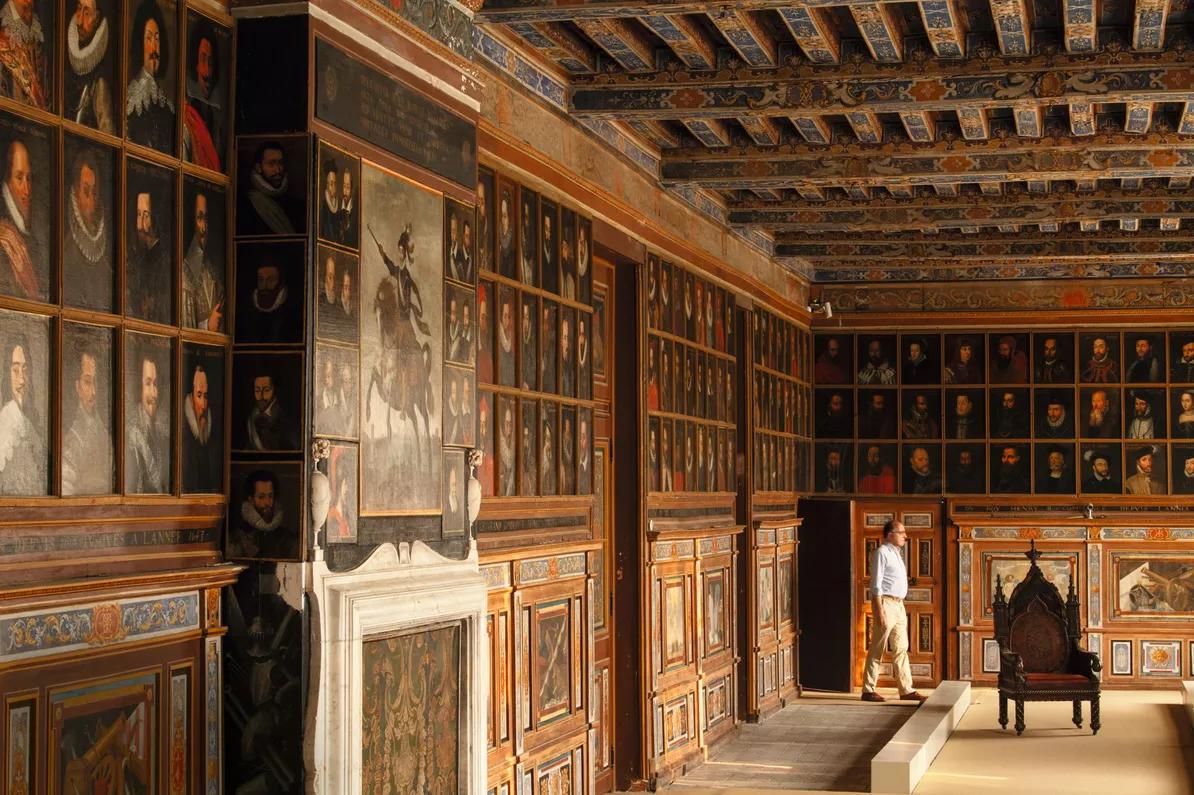
Restoration of each portrait cost between 1,500 and 2,000 euros. Stephan Gladieu for Le Figaro Magazine
This verdant setting, which visitors can discover for themselves, is now listed on the supplementary inventory of historic monuments. Overflowing with energy, Guy and Natalie du Pavillon are multiplying their initiatives to enrich their tour proposal and introduce the 20,000 visitors who come to Beauregard every year to this residence, which can boast of having welcomed Louis XIV and even the Cardinal de Richelieu. We're trying to offer something a little different from the other historic monuments around us," explains Guy du Pavillon. People are looking for authenticity, peace and quiet, the opportunity to take guided tours, to be entertained with booklets and games, but also to freely enjoy the park and eat on site."
In recent years, a project has been launched to reconstruct the biographies of all the characters in the gallery, based on a 17th-century compendium. A new gallery has also been inaugurated, devoted to the dogs of stars, photographed by Antoine Schneck. Among the illustrious canines immortalized on black backgrounds: Yves Saint Laurent's Moujik IV, Daniel Auteuil's Loopy, Stéphane Bern's Dash, Isabelle Adjani's Uma... They too now live the life of a château at Beauregard.
Parc & Château de Beauregard, 12, chemin de la Fontaine, 41120 Cellettes (02.54.70.41.65; Instagram/chateaudebeauregard and Facebook/chateaudebeauregard). Open to visitors until November 11. Schedules for guided and dramatized tours.
Read the article on www.lefigaro.fr
By Ghislain de Montalembert
Published June 15, 2024
